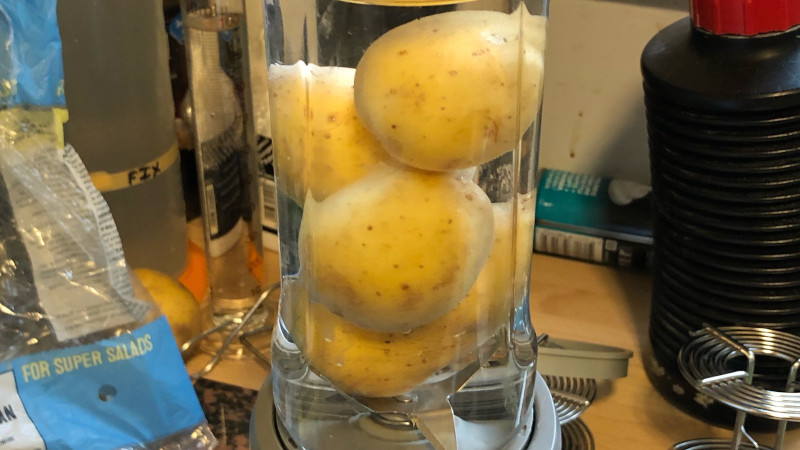If film photography’s your thing, the chances are you may have developed a roll or two yourself, and if you’ve read around on the subject it’s likely you’ll have read about using coffee, beer, or vegetable extracts as developer. There’s a new one to us though, from [cm.kelsall], who has put the tater in the darkroom, by making a working developer with potatoes as the active ingredient.
The recipe follows a fairly standard one, with the plant extract joined by some washing soda and vitamin C. The spuds are liquidised and something of a watery smoothie produced, which is filtered and diluted for the final product. It’s evidently not the strongest of developers though, because at 20 Celcius it’s left for two hours to gain an acceptable result.
The chemistry behind these developers usually comes from naturally occurring phenols in the plant, with the effectiveness varying with their concentration. They’re supposed to be better for the environment than synthetic developers, but sadly those credentails are let down somewhat by there not being a similar green replacement for the fixer, and the matter of a load of silver ions in the resulting solutions. Still, it’s interesting to know that spuds could be used this way, and it’s something we might even try ourselves one day.
We’ve even had a look at the coffee process before.















So you really can do more than just boil ’em, mash ’em, or stick ’em in a stew!
haven’t you heard of potato heads, potato stamps, spud gun?
Or powering your DOOM-playing PC with potatoes: https://hackaday.com/2020/10/13/the-potatoes-of-doom/
You can also use them to make color film:
https://en.wikipedia.org/wiki/Autochrome_Lumi%C3%A8re . Technology Connections has a video demonstration of the technique: https://youtu.be/hE3KjKg69ZA
“…but sadly those credentails are let down somewhat…”
Is this supposed to be “credentials?”
B&W developers for silver halide images primarily consist of a reducing agent and an alkali. Other ingredients may include restrainers like potassium bromide to slow or limit the process, preservatives to keep the solution fresh longer, chemicals to tint the image, solvents, etc.. Here, vitamin C can be the reducing agent and the washing soda is the alkali. What is the potato slurry doing?
Keeping an eye in things
Usually storage time isn’t a problem with one shot (potato) developers for me. I used potassium bromide as an anti fog sometimes, also will do a Christmas vegetable developer, just for kicks.
Have used parsnips too, they seemed like a more powerful developer compared to potato. Am hoping to get more people trying this and doing some testing.
“but sadly those credentials are let down somewhat by there not being a similar green replacement for the fixer, and the matter of a load of silver ions in the resulting solutions”
Would it be worth trying to recover the silver to the metallic form, or is it not worth it?